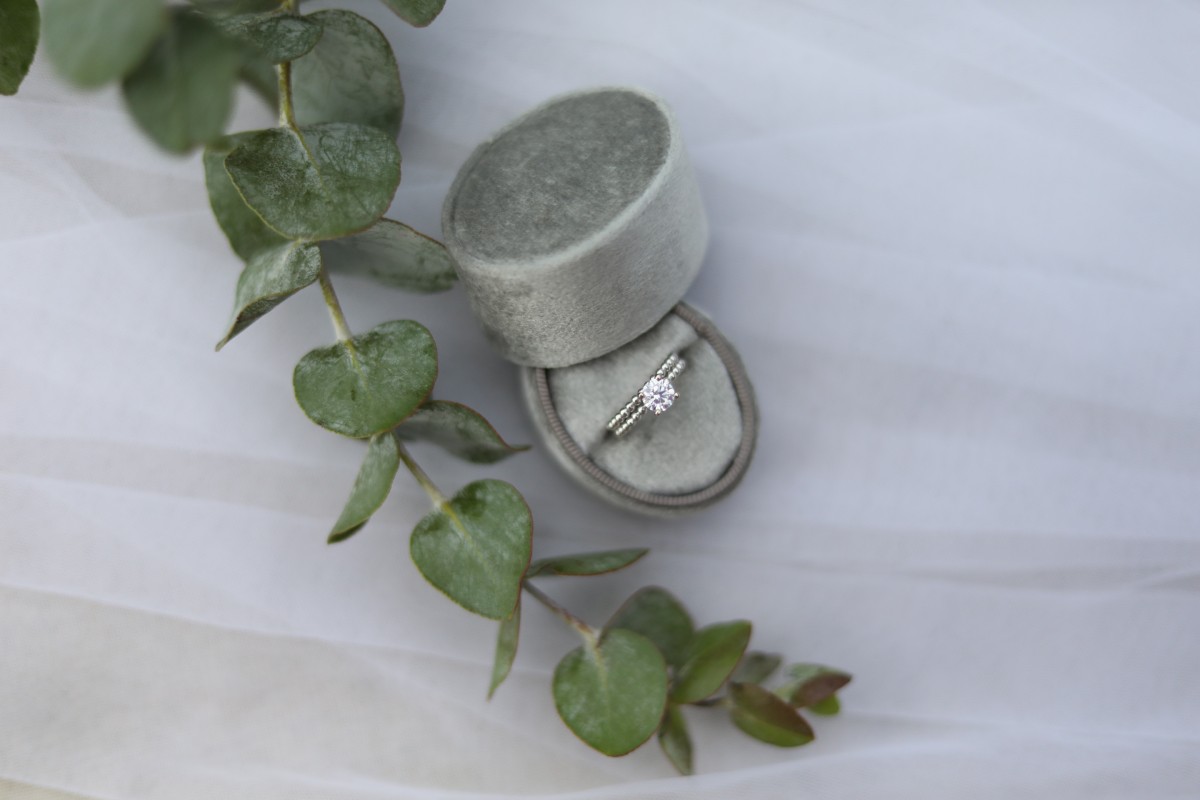Introduction
In a world where our choices wield power, the allure of jewelry extends beyond its shimmer and design. The story of where it comes from and how it’s made has become as pivotal as the piece itself. Ethically sourced jewelry presents an intersection of beauty and conscience, where the sparkle isn’t dimmed by the shadow of questionable practices.
Brief Explanation of Ethically Sourced Jewelry
Ethically sourced jewelry is more than a buzzword or a marketing gimmick; it’s a commitment. It stands for jewels that are procured, produced, and presented without causing harm to our environment, society, or the individuals within the supply chain. Whether it’s ensuring miners work in safe conditions with fair wages, adhering to sustainable mining practices, or guaranteeing that gemstones aren’t financing conflict, ethically sourced jewelry embodies a holistic approach to the industry. It is the assurance that the glittering gem around your neck or the golden band on your finger comes with a clear conscience.
The Transparent Trail
One of the hallmarks of ethically sourced jewelry is transparency. From mine to market, every step is accounted for, ensuring consumers can trace the origins of their cherished pieces and be confident in their ethical credentials.
Importance of Ethical Sourcing in the Jewelry Industry
The jewelry industry, with its vast network spanning multiple countries and involving numerous stakeholders, has historically been mired in concerns over environmental degradation, exploitative labor practices, and the dark realm of conflict diamonds. Ethical sourcing emerges as a beacon, guiding the industry towards practices that respect our planet and its people.
Environmental Stewardship
Mining, if done irresponsibly, can lead to deforestation, loss of biodiversity, and soil and water contamination. Ethical sourcing ensures that ecological concerns are front and center, advocating for minimal environmental impact and the restoration of mined lands.
Human Rights and Fair Wages
Beyond the environment, ethical sourcing champions the rights of workers, ensuring they are not only paid fairly but also work in conditions that prioritize their safety and well-being. It vehemently opposes child labor, forced labor, and any form of exploitation.
Overview of Topics Covered in the Post
As we delve deeper into the realm of ethically sourced jewelry, this post aims to be your guiding star. We’ll embark on a journey that:
- Explores the criteria that define ethically sourced jewels and the certifications to look out for.
- Unveils the darker facets of the industry and the pressing need for responsible practices.
- Offers practical tips and insights on selecting ethical pieces, ensuring that your next jewelry purchase mirrors your values.
- Showcases brands and artisans leading the way in ethical jewelry, inspiring with their designs and their ethos.
Jewelry, with its power to captivate and convey sentiments, holds a unique place in our hearts. By opting for ethically sourced pieces, we don’t just adorn ourselves with beauty but also with values. As we navigate the myriad choices the market presents, may we remember that every purchase is a vote for the kind of world we want to live in and leave behind. Join us as we unravel the gleaming world of ethically sourced jewelry, where each piece tells a story not just of beauty, but of hope, respect, and responsibility.
Understanding the Jewelry Industry
The jewelry industry has long been associated with beauty, luxury, and symbolic meaning. For centuries, people have adorned themselves with jewelry, elevating it to an essential part of human culture. However, beneath the glitz and glamour, there are pressing ethical concerns that many are unaware of. By understanding the intricacies of the industry, you can make informed decisions and select jewelry that not only adorns you but also aligns with your values.

Overview of the traditional jewelry industry
The traditional jewelry industry is a multi-billion dollar sector that spans across continents. It encompasses everything from mining raw materials, like diamonds and gold, to crafting and retailing the finished products. A significant part of this process involves the extraction of precious stones and metals. These mining practices often happen in developing countries where regulations might be lax, leading to environmental degradation and labor rights violations.
Explanation of common practices and their impact
The extraction of gemstones and precious metals is labor-intensive and often takes place in challenging conditions. Sadly, in many regions, miners work in unsafe environments, without adequate protection or fair wages. “Blood diamonds,” or conflict diamonds, are a distressing example of how jewelry can be linked to human rights abuses. These diamonds come from war zones and help finance armed conflicts against governments.
Additionally, irresponsible mining can lead to severe environmental repercussions. When not done sustainably, it can result in deforestation, soil erosion, and contamination of water sources. Gold mining, in particular, involves the use of toxic chemicals like mercury and cyanide, which can pollute waterways, harm ecosystems, and endanger the health of local communities.
Beyond mining, the jewelry production chain also involves manufacturing and retailing practices that may not always prioritize ethical considerations. Cases of underpaid labor, poor working conditions, and lack of transparency are not uncommon.
Importance of ethical sourcing in this context
Given the issues prevalent in the traditional jewelry sector, the importance of ethical sourcing cannot be stressed enough. Ethical sourcing ensures that the materials used in jewelry have been obtained responsibly, without causing harm to the environment or exploiting workers. It’s a commitment to transparency, fairness, and sustainability.
When you choose ethically sourced jewelry, you are supporting an industry that values human rights and environmental conservation. It’s a way to enjoy the beauty and luxury of jewelry without the accompanying guilt. Ethical jewelry brands often use recycled or sustainably mined materials, prioritize fair labor practices, and are transparent about their supply chains. They may also invest in community development projects, ensuring that those involved in the production process benefit directly from their efforts.
In essence, understanding the traditional practices and their implications is crucial to appreciate the significance of ethically sourced jewelry. By being aware of the industry’s darker side, consumers can make conscious choices, advocating for a more sustainable and just world.
It’s essential for individuals to research brands, ask questions about sourcing, and support those that prioritize ethical practices. In doing so, you can wear your jewelry with pride, knowing it represents a brighter future for the industry and the communities it touches.
What is Ethically Sourced Jewelry?
Ethically sourced jewelry stands as a beacon of hope in an industry that has, at times, been shadowed by various ethical dilemmas. But what exactly does “ethically sourced” mean? To fully appreciate its value, we must delve into its definition, the aspects it encompasses, and its significance to consumers and the broader world.
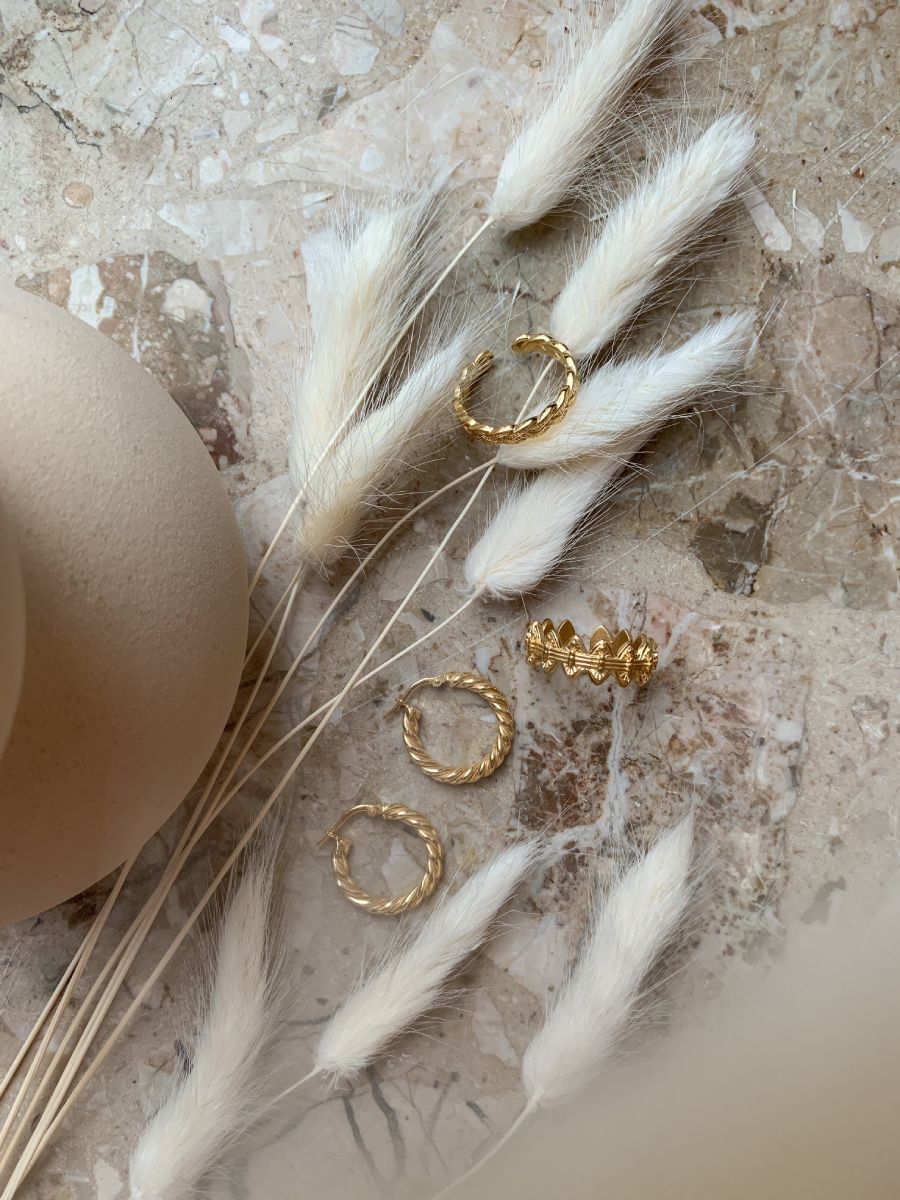
Definition of ethically sourced jewelry
At its core, ethically sourced jewelry implies that every step in the creation and sale of a jewelry piece respects both human and environmental rights. This means that from mining to market, all involved processes prioritize the well-being of people, communities, and the environment. Such jewelry doesn’t just look good; it feels good to wear, knowing that its production didn’t harm our planet or its inhabitants.
Different aspects of ethical sourcing
Labor Practices
A pivotal aspect of ethical sourcing revolves around fair labor practices. Ethically sourced jewelry ensures that workers, from miners to artisans, receive fair wages and operate in safe conditions. Child labor, underpaid work, or any form of exploitation remains strictly out of the picture. These brands often ensure a transparent supply chain, allowing consumers to trace back the journey of their chosen piece, ensuring peace of mind regarding its ethical origins.
Environmental Impact
Next comes the environmental consideration. Ethical jewelry brands prioritize sustainable mining techniques, which cause minimal environmental disruption. This might involve recycling metals or using lab-grown gemstones, which significantly reduce the need for traditional mining. Moreover, such brands often employ practices like reforestation, water conservation, and reduced carbon footprints, ensuring that they give back to Mother Nature as much as they take.
Community Development
Another hallmark of ethical sourcing is the upliftment of local communities. Brands committed to this cause often reinvest a part of their profits in community projects, be it education, health, or infrastructure. This ensures that not only do the workers get their rightful share, but their communities thrive alongside them.
Why it matters to consumers and the world
Our choices as consumers wield immense power. Every purchase decision is a vote cast in favor of the kind of world we wish to see. By choosing ethically sourced jewelry, we support fair wages, safety, environmental conservation, and community development.
Moreover, with the rise of conscious consumerism, people are actively seeking transparency in their purchases. They want to know the story behind their products, seeking assurance that their choices align with their values. Ethically sourced jewelry provides this transparency, letting consumers wear their values, quite literally.
For the world at large, the move towards ethical sourcing in jewelry (and other sectors) can pave the way for more sustainable and fair global trade practices. It challenges the status quo, demanding a re-evaluation of what we’ve normalized, and sets the stage for a more just and sustainable future.
In conclusion, ethically sourced jewelry is not just a niche or a trend. It’s an evolution in the jewelry industry, reflecting a broader shift in societal values. As consumers, understanding this concept is the first step towards making more informed, ethical choices that resonate with our values and help sculpt a better world for all.
Ethical Sourcing: Labor Practices
The jewelry industry, glittering and radiant on the surface, has often grappled with shadows in its depths, especially concerning labor practices. Ethical sourcing seeks to dispel these shadows, ensuring that the hands that craft our beautiful adornments work in conditions that uphold their dignity and rights. To truly appreciate the significance of ethically sourced jewelry in the context of labor practices, we must first recognize the prevailing issues, understand how ethical sourcing addresses them, and grasp the broader impact of supporting ethically-minded brands.
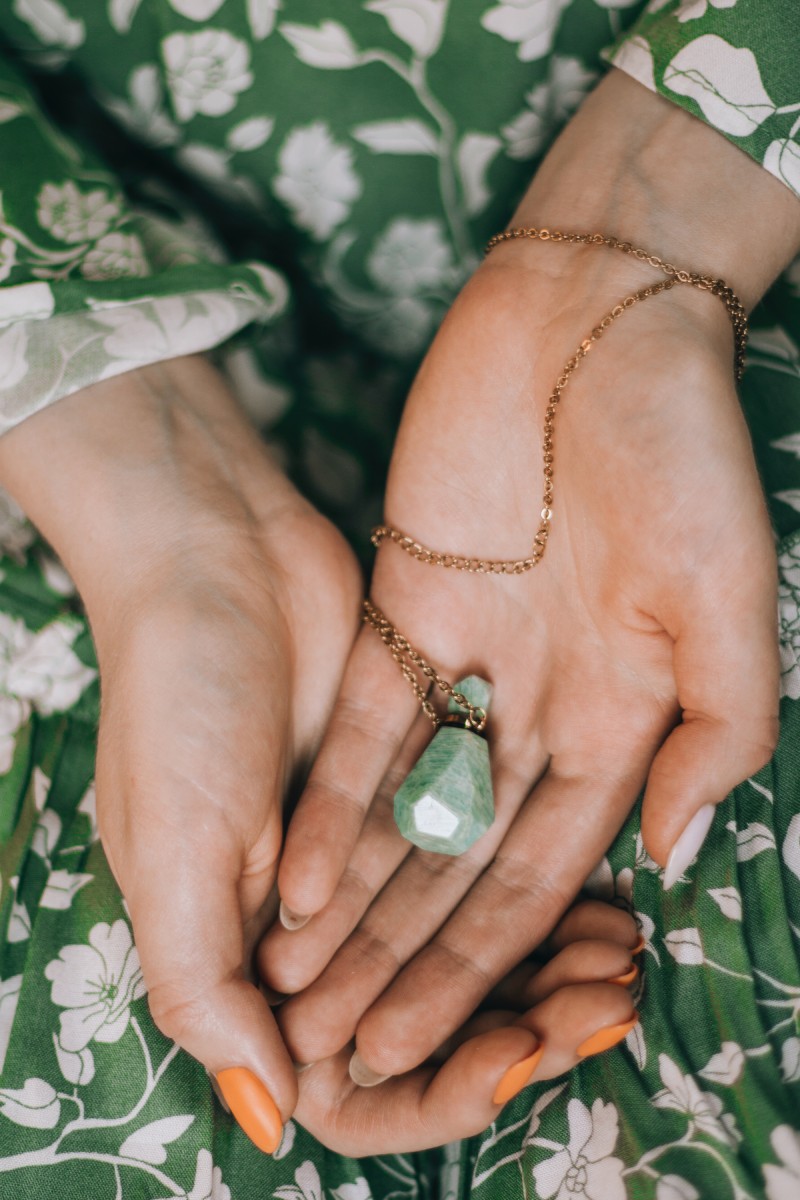
Issues related to labor practices in the jewelry industry
The jewelry industry’s supply chain, from mines to market stalls, presents numerous challenges. A significant concern lies in the mines where gemstones and precious metals are extracted. Many miners work in hazardous environments, without the necessary safety gear, and are vulnerable to accidents. These mines, often in remote areas of developing countries, may lack proper oversight, making it easy for child labor and forced labor to persist.
Beyond mining, the jewelry crafting process itself might involve artisans working long hours in cramped, unsafe workshops. They might face health risks from the chemicals used in crafting and receive wages that do not reflect the skill and effort they invest.
How ethical sourcing addresses these issues
Ethical sourcing serves as a beacon of change in this landscape. Brands dedicated to this cause prioritize:
Transparency
They ensure a clear supply chain that allows consumers to trace back the journey of their jewelry, from its raw state to its final form. This transparency not only builds trust but also holds brands accountable.
Fair Wages and Safe Conditions
Ethical brands commit to paying their workers, whether miners or artisans, a wage that respects their skill and effort. This goes beyond just a living wage – it’s a wage that truly reflects the value of their work. Furthermore, they ensure that working conditions are safe and hygienic, investing in training and equipment as necessary.
Zero Tolerance for Exploitation
Brands dedicated to ethical sourcing adopt a zero-tolerance policy towards child labor, forced labor, and any form of worker exploitation. They often collaborate with third-party organizations for regular audits and certifications, ensuring that their practices remain impeccable.
Impact of supporting brands with fair labor practices
When consumers choose to support ethically sourced jewelry brands, the ripple effect is profound. Every purchase is a statement, a message to the industry that labor rights are non-negotiable.
Supporting these brands fuels a demand for ethical sourcing, pushing even mainstream brands to reconsider and refine their practices. This consumer-driven demand can catalyze industry-wide shifts, paving the way for global standards that prioritize worker rights.
Moreover, on a more personal level, it allows consumers to wear their jewelry with pride. Knowing that their necklace, ring, or bracelet did not come at the cost of someone else’s well-being adds a layer of significance to the piece.
In conclusion, the intersection of ethical sourcing and labor practices in the jewelry industry is a testament to how consumer choices can reshape industries. Recognizing the power of these choices and acting on them is a step towards a more just, empathetic, and ethical world. Ethical sourcing doesn’t just make jewelry shine brighter; it makes the world a little brighter too.
Ethical Sourcing: Environmental Impact
Amidst the gleam and allure of jewelry lies a stark reality: the environmental toll of traditional jewelry production. The quest for precious metals and gemstones can often leave scars on our planet, affecting ecosystems and communities alike. However, ethical sourcing shines a light on these concerns, advocating for practices that minimize environmental harm. Delving into the environmental dimensions of the jewelry industry, we’ll explore the impact of conventional methods, the promise of ethical sourcing, and the significance of championing eco-friendly practices.
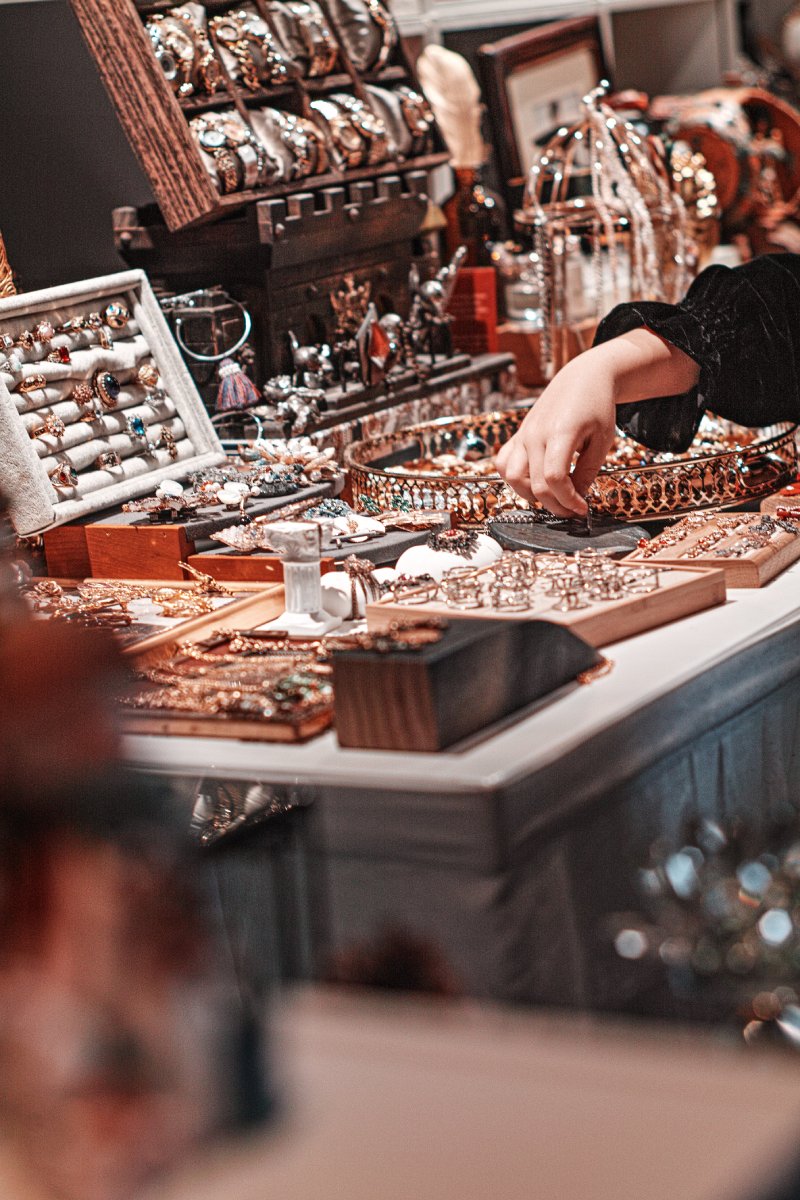
Environmental impact of traditional jewelry production
The extraction of precious metals and gemstones from the Earth is an invasive process. Traditional mining methods can lead to:
Deforestation
Large tracts of forests are often cleared to make way for mines, disturbing habitats and threatening biodiversity.
Soil Erosion
Without the roots of trees to anchor the soil, areas around mines can experience significant erosion, affecting the land’s fertility and leading to sedimentation in nearby water bodies.
Chemical Pollution
Gold mining, especially, involves the use of toxic chemicals like mercury and cyanide. If not managed properly, these chemicals can leach into the soil and water, poisoning ecosystems and endangering the health of nearby communities.
How ethical sourcing minimizes this impact
Brands committed to ethical sourcing adopt a multifaceted approach to curtail environmental harm:
Sustainable Mining
They prioritize mining methods that have a reduced environmental footprint. This might involve techniques that limit deforestation, use fewer chemicals, or focus on rehabilitation after mining is complete.
Use of Alternative Materials
Some ethical jewelry brands opt for lab-grown gemstones or recycled metals, which drastically cut down the need for traditional mining. Lab-grown diamonds, for instance, offer the same sparkle without the environmental cost.
Eco-friendly Production Processes
Beyond sourcing, the production processes are designed to be eco-friendly. This can involve using renewable energy, minimizing water use, or adopting waste reduction techniques.
Importance of supporting eco-friendly practices
The Earth’s resources are finite, and with the threat of climate change looming large, the choices we make have never been more critical. Supporting eco-friendly practices in the jewelry industry, or any industry for that matter, is no longer just a matter of preference; it’s a necessity.
When we choose ethically sourced jewelry, we not only get a beautiful product, but we also contribute to a larger narrative of sustainability. Each purchase becomes a nod to a brand’s efforts to protect our planet, encouraging them to continue and inspiring others to follow suit.
Moreover, eco-friendly practices ensure that the beauty of the jewelry does not come at the expense of the beauty of our planet. It creates a harmonious balance, where luxury and responsibility coexist seamlessly.
In conclusion, as the adage goes, “We do not inherit the Earth from our ancestors; we borrow it from our children.” The environmental implications of our choices today will shape the world for future generations. Ethical sourcing, with its commitment to minimizing environmental impact, offers a path forward that is not just sustainable, but also just and compassionate. As consumers, embracing this path is our way of ensuring that the legacy we leave behind is one of hope, resilience, and reverence for our planet.
How to Identify Ethically Sourced Jewelry
The allure of ethically sourced jewelry resonates with many, but deciphering genuine ethical pieces from mere marketing gimmicks can be daunting. How do you ensure that the jewelry you purchase genuinely upholds the ethical standards it advertises? In the quest to curate an ethical jewelry collection, understanding the markers of genuine ethical sourcing becomes paramount. Let’s explore the certifications, the right questions to pose to sellers, and the red flags that can guide you in making informed choices.
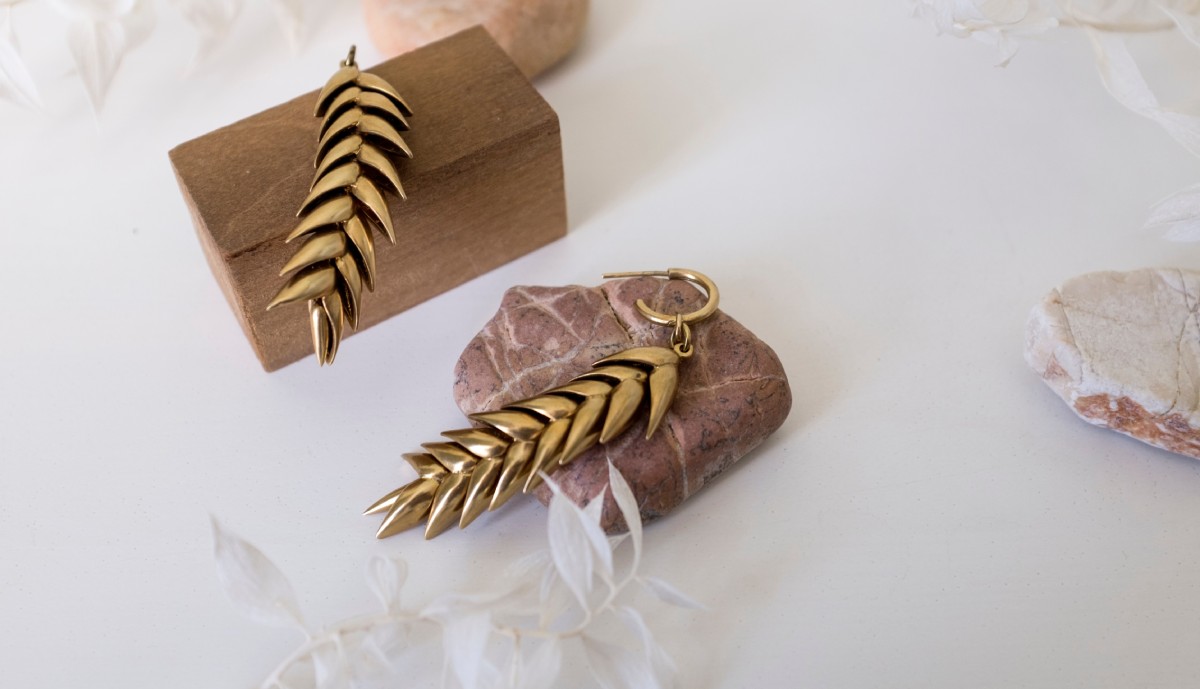
Certifications to look for when buying jewelry
Certifications offer an external validation of a brand’s commitment to ethical and sustainable practices. While numerous certifications exist, some notable ones include:
Fairmined Certification
This certification ensures that the precious metals used in the jewelry come from empowered artisanal and small-scale mining communities. It vouches for safe working conditions and environmental responsibility.
Kimberley Process Certification
Specific to diamonds, this certification aims to eliminate the trade in conflict diamonds. A Kimberley Process certified diamond ensures that it is conflict-free.
Responsible Jewellery Council (RJC) Certification
RJC covers the entire jewelry supply chain, from mining to retail. Brands with this certification have undergone rigorous assessments to ensure ethical, social, and environmental responsibility.
Questions to ask sellers/brands
Engaging with sellers or brands directly can provide insights beyond what’s evident on the surface. Here are some probing questions to consider:
What is the origin of your gemstones and metals?
Understanding the source can shed light on the mining practices and conditions of the workers involved.
Do you have any third-party certifications?
Brands genuinely committed to ethical sourcing will likely be transparent about their certifications and affiliations.
How do you ensure fair wages and safe working conditions?
An authentic commitment goes beyond just sourcing; it encompasses the welfare of everyone involved in the jewelry-making process.
Red flags to watch out for
While certifications and brand assurances play a crucial role, being vigilant about certain red flags can further guide your purchasing decisions:
Vague Claims
Beware of brands that use terms like “green,” “eco-friendly,” or “ethical” without any substantive evidence or specifics. Authentic brands will be transparent and specific about their practices.
Lack of Transparency
If a brand is hesitant to disclose information about its sourcing and production methods or dodges direct questions, it might be a signal to dig deeper or look elsewhere.
Too-Good-To-Be-True Pricing
Ethically sourced materials and fair labor practices often come at a premium. If a piece of jewelry is suspiciously cheap, it’s worth questioning the sourcing and production methods behind it.
In conclusion, identifying ethically sourced jewelry is a blend of research, vigilance, and asking the right questions. The world of jewelry is as vast as it is dazzling. Yet, with the right tools and knowledge at your disposal, you can navigate it with confidence, ensuring that each piece you add to your collection is not only beautiful but also embodies the values you hold dear. Ethically sourced jewelry offers more than just aesthetic appeal; it’s a testament to a brand’ s commitment to a better world. As consumers, your choices can amplify this commitment, shaping an industry that shines in every sense of the word.
Brands Championing Ethically Sourced Jewelry
In the shimmering universe of jewelry, a constellation of brands are redefining luxury with a conscience. These trailblazers, committed to ethical sourcing, are not just selling jewelry; they are telling stories – stories of empowerment, sustainability, and respect for our planet. As consumers increasingly align their spending with their values, these brands emerge as luminaries, lighting the path towards a more just and sustainable industry. Let’s delve into the world of some of these leading brands, their commendable practices, and the ripple effect they are creating in the realm of jewelry.
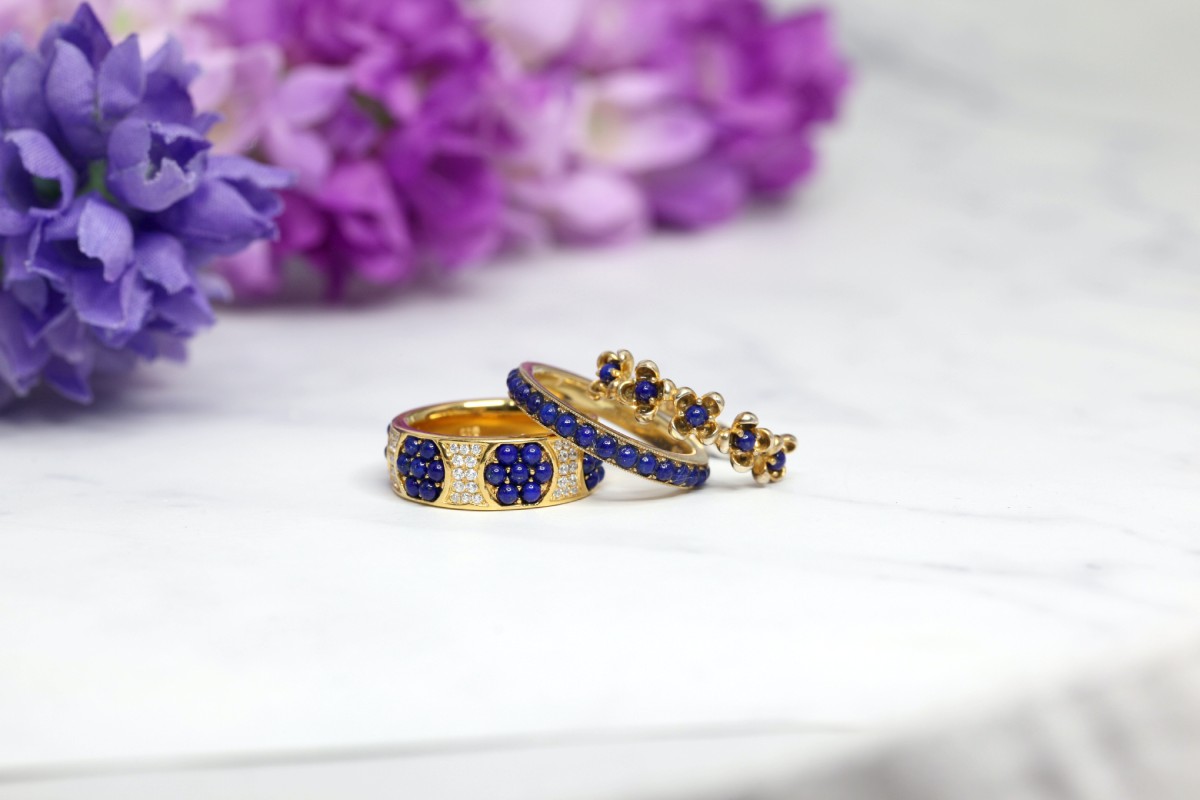
Introduction to some leading brands in ethical sourcing
The ethical jewelry movement, though niche, is bustling with brands that have made sustainability and fairness their cornerstones. Some noteworthy names in the arena include:
Brilliant Earth
Known for its commitment to transparency, Brilliant Earth offers ethically sourced diamonds, gemstones, and metals. They emphasize traceability, ensuring that each gemstone can be tracked to its source.
Vrai
Harnessing the power of technology, Vrai specializes in lab-grown diamonds, which boast the same characteristics as mined diamonds but with a fraction of the environmental impact.
Anaconda
A brand that values artisanal craftsmanship, Anaconda sources its materials with utmost care, ensuring they resonate with the brand’s ethos of sustainability and beauty.
Overview of their practices and products
Each brand, while unified in its commitment to ethical sourcing, adopts a unique approach:
Brilliant Earth
-
Traceable Sourcing: They provide detailed information about the origin of their diamonds and gemstones, promoting transparency.
-
Beyond Conflict-Free: Their diamonds go beyond the standard definition of conflict-free, ensuring they are sourced from mines that adhere to strict labor, trade, and environmental standards.
Vrai
-
Sustainable Creation: Their diamonds are created in a zero-emission foundry powered by renewable energy.
-
Transparent Pricing: Vrai is known for its transparent pricing model, eliminating the traditional markup, and ensuring customers get value for their money.
Anaconda
-
Artisanal Craftsmanship: Each piece is handcrafted, showcasing the brand’s dedication to artistry.
-
Nature-Inspired Designs: Their designs, often inspired by nature, resonate with their commitment to sustainability.
The influence of these brands on the industry
These ethical champions are not just content with doing good; they are shaping the industry’s future. Their influence can be seen in multiple dimensions:
Setting Standards
By voluntarily adhering to stringent ethical and environmental standards, these brands are setting benchmarks for others to emulate.
Educating Consumers
Through their marketing campaigns, product descriptions, and consumer interactions, they are raising awareness about ethical sourcing, making it a crucial consideration for buyers.
Fostering Collaboration
Many of these brands are not working in silos. They often collaborate with local communities, artisans, and even other brands, fostering a sense of collective responsibility towards ethical sourcing.
In conclusion, as the demand for ethically sourced jewelry grows, these brands play a pivotal role in ensuring that this isn’t just a fleeting trend but a lasting change. They have demonstrated that ethics and aesthetics can go hand in hand, that luxury need not come at the expense of our planet or its inhabitants. Their success stories are a beacon, a testament to the power of conscious capitalism. They beckon consumers to not just wear jewelry, but to wear their values, and in doing so, shape a brighter, more equitable future for the jewelry industry and beyond.
How to Care for Your Ethically Sourced Jewelry
Investing in ethically sourced jewelry is a commendable step toward sustainable and conscious consumption. However, the journey doesn’t end at purchase. Just as we must be mindful about where our jewelry comes from, we should also be attentive to how we care for it. Proper care ensures not only that these pieces last a lifetime, reflecting their true value, but also that we further the sustainability narrative by reducing the need for replacements or repairs. Let’s delve into the symbiotic relationship between jewelry care and sustainability and arm ourselves with tips to maintain the luster of our cherished pieces.
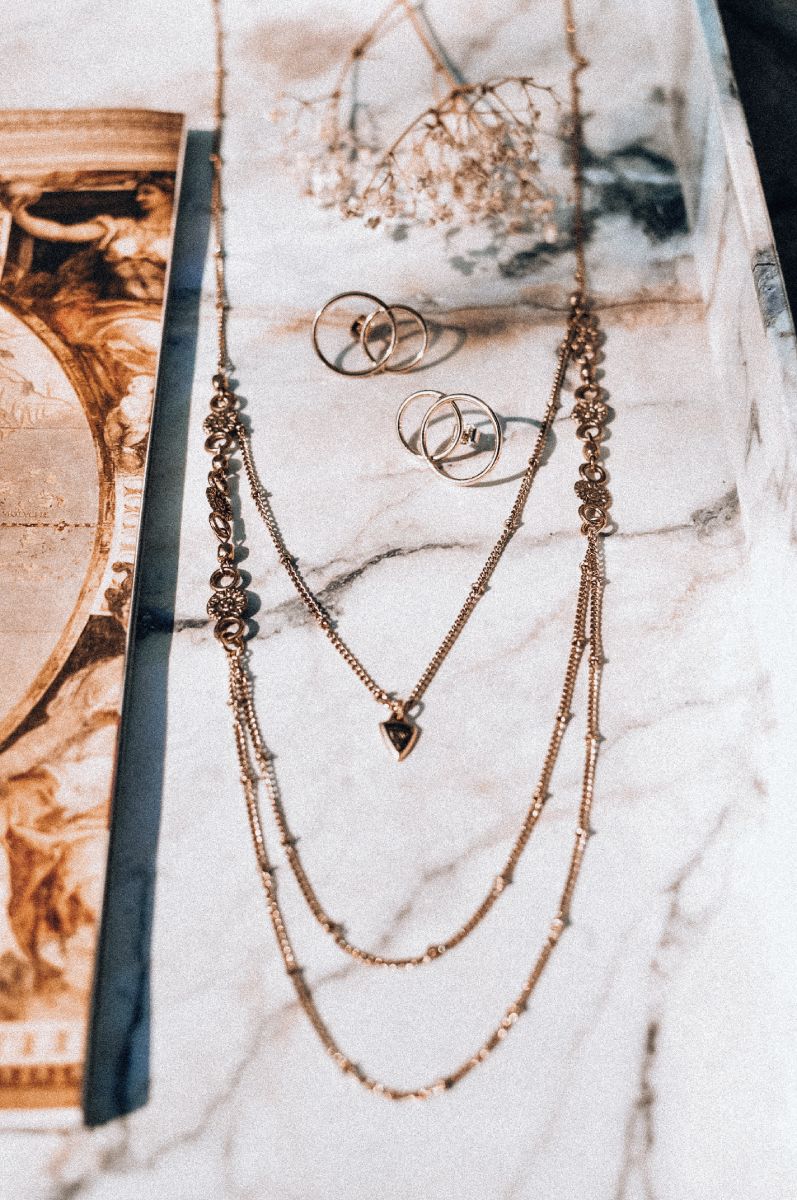
Importance of caring for jewelry to prolong its life
Jewelry, regardless of its source, is often delicate, requiring tender love and care. Ethically sourced jewelry, being a testament to fair practices and sustainability, deserves this attention even more. Caring for these pieces not only preserves their beauty but also maximizes their lifespan, ensuring that the effort and resources invested in crafting them are honored for years to come.
Tips for maintaining different types of ethically sourced jewelry
Different jewelry materials necessitate varying care routines. Here are some general guidelines for some common types:
Gold and Gold-plated Jewelry
-
Gentle Cleaning: Use warm water, mild soap, and a soft-bristled brush or cloth to gently clean. Avoid using abrasive materials that can scratch the surface.
-
Storage: Store separately in soft pouches or lined boxes to prevent scratches from other pieces.
Silver Jewelry
-
Tarnish Prevention: Store in a cool, dry place. Use anti-tarnish strips in your jewelry box.
-
Polishing: Use a soft cloth designed for silver cleaning to maintain its shine. Avoid using tissue or paper towels as they might scratch the jewelry.
Gemstones
-
Routine Cleaning: Clean with a soft cloth after wear to remove oils and dirt. Some stones like pearls are porous and can absorb chemicals, so they should be cleaned gently with a damp cloth.
-
Professional Cleaning: Delicate or treated gemstones may require professional cleaning to prevent damage.
Lab-grown Diamonds
-
Regular Cleaning: Soak in a solution of warm water and mild dish soap, gently brushing away dirt or grime.
-
Storage: Even though they are hard, diamonds can scratch other jewelry. Store them separately or with adequate padding.
The connection between care and sustainability
At the heart of sustainability lies the principle of extending the life of products, thereby reducing waste and the need for new resources. When we care for our jewelry, we not only ensure that its aesthetic appeal remains intact, but we also contribute to a larger sustainability ethos.
Reducing Waste
Well-maintained jewelry seldom needs replacements. This means fewer pieces end up discarded or forgotten in jewelry boxes, cutting down on waste.
Preserving Resources
Crafting new jewelry requires resources, both in terms of materials and energy. By prolonging the life of our existing pieces, we indirectly reduce the demand for new items, conserving resources.
Emotional Sustainability
Jewelry often holds sentimental value. Proper care ensures that these cherished pieces can be passed down through generations, weaving tales of sustainability and ethics into family heirlooms.
In conclusion, ethically sourced jewelry is more than just an adornment; it’s a statement of values. By caring for it diligently, we not only honor the artisans and practices behind its creation but also fortify our commitment to a sustainable future. It’s a reminder that in every little act, from buying to caring, we have the power to make a difference.
Encouraging Ethical Practices in the Jewelry Industry
Driving change in the jewelry industry requires more than just conscious brands stepping up; it mandates an active participation from consumers and communities. It’s crucial to recognize the ripple effect that individual and collective actions can create in reshaping an entire industry. Every purchase, conversation, and advocacy effort has the potential to influence the industry towards more ethical and sustainable practices. This section sheds light on the undeniable power of consumer demand, advocacy, education, and collective action in promoting ethical sourcing within the jewelry sector.
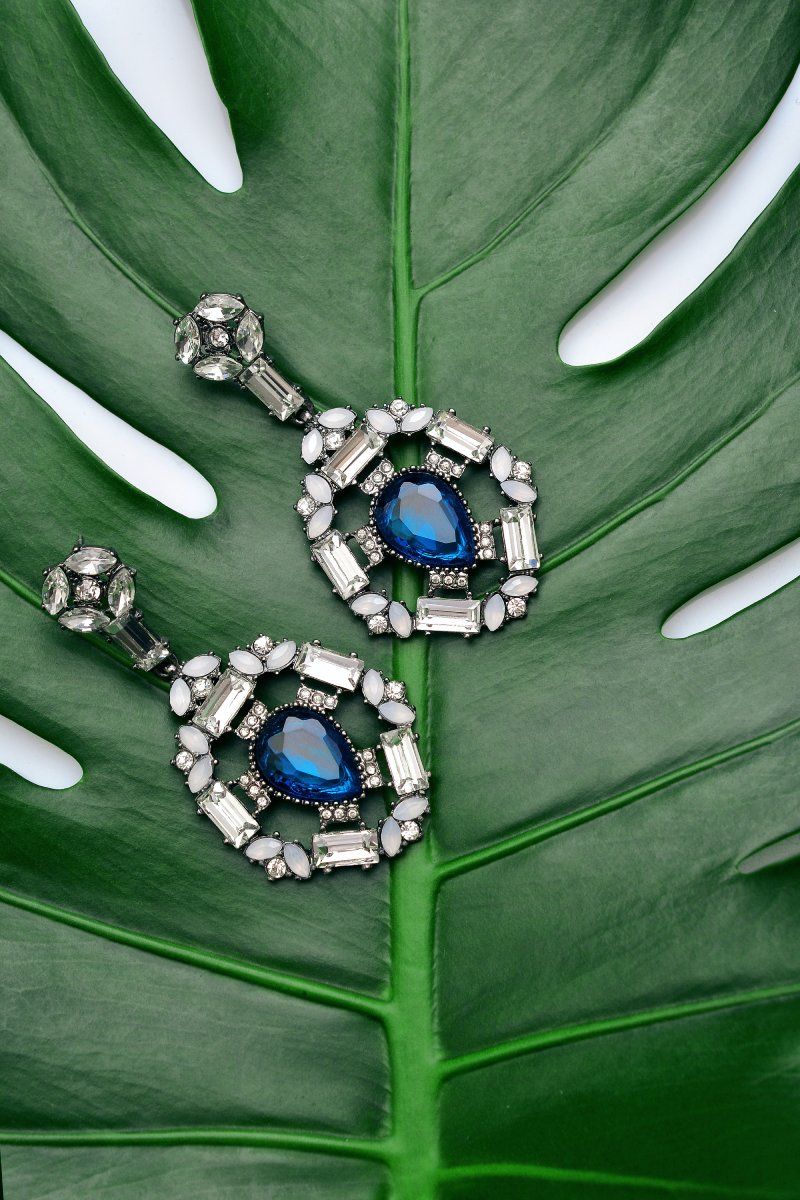
Role of consumer demand in promoting ethical sourcing
The foundation of any industry is consumer demand. By voicing preferences and making informed choices, consumers wield the power to shape industries. When we prioritize ethically sourced jewelry:
-
Market Dynamics Shift: Brands notice increased demand for ethical products and naturally steer their sourcing and production methods in that direction.
-
Competition Drives Change: As ethical sourcing becomes a competitive edge, even traditional brands may find it imperative to reevaluate and update their sourcing strategies.
-
Transparency Becomes the Norm: With more consumers asking questions and seeking information about product origins, transparency will move from being a luxury to a necessity for brands.
Importance of advocacy and education
Awareness is the first step towards change. By spreading knowledge about the impacts of traditional jewelry sourcing and the benefits of ethical alternatives:
-
Informed Decision Making: Educated consumers can differentiate between truly ethical brands and those merely riding the wave of greenwashing.
-
Creating A Ripple Effect: Sharing knowledge, whether through social media, workshops, or word of mouth, amplifies the reach and can lead more consumers down the path of ethical buying.
-
Empowering Artisans and Workers: Advocacy can also shed light on the stories of artisans and miners, highlighting the importance of fair wages and working conditions.
Impact of collective consumer action
The strength of a movement is magnified when consumers come together:
-
Boycotts and Support: Strategically choosing which brands to support or boycott based on their practices can lead to tangible changes in brand behavior.
-
Loud Voices, Big Changes: Petitions, open letters, or joint campaigns raise awareness and can force brands to reevaluate their ethical stance.
-
Building Communities: Forming or joining communities focused on ethical jewelry practices fosters shared learning, joint actions, and creates a supportive network.
Building Bridges with Brands
An additional avenue of impact lies in dialogue. By engaging in conversations with brands, providing feedback, and appreciating their efforts towards ethical sourcing, we can build bridges and collaborate for a better future. Positive reinforcement can sometimes be as influential as criticism.
Being the Change
Instead of waiting for the industry to change, proactive consumers can also explore creating their own ethical jewelry brands or platforms, setting benchmarks and pushing the envelope for the entire industry.
In conclusion, the journey towards a fully ethical jewelry industry is multifaceted, requiring the combined efforts of brands, consumers, advocates, and educators. While the path may be long and fraught with challenges, the potential impact on artisans, the environment, and the industry’s future makes every effort worthwhile. Every piece of ethically sourced jewelry worn becomes a symbol of this collective commitment, reminding us of the power and responsibility we hold in our hands.
Conclusion
The world of jewelry, with its glitter and allure, has facets that often remain hidden from the average consumer. Behind the sparkle of a diamond or the sheen of gold lies a complex supply chain that can, unfortunately, be tainted with unethical practices. As consumers, understanding the significance of ethically sourced jewelry and actively making informed choices can play an instrumental role in bringing about change. This conclusion provides a succinct recap of our journey through the intricacies of ethical sourcing in the jewelry industry, encouraging readers to apply the knowledge and insights shared, and offers a contemplation on the broader implications of ethical sourcing for our world.
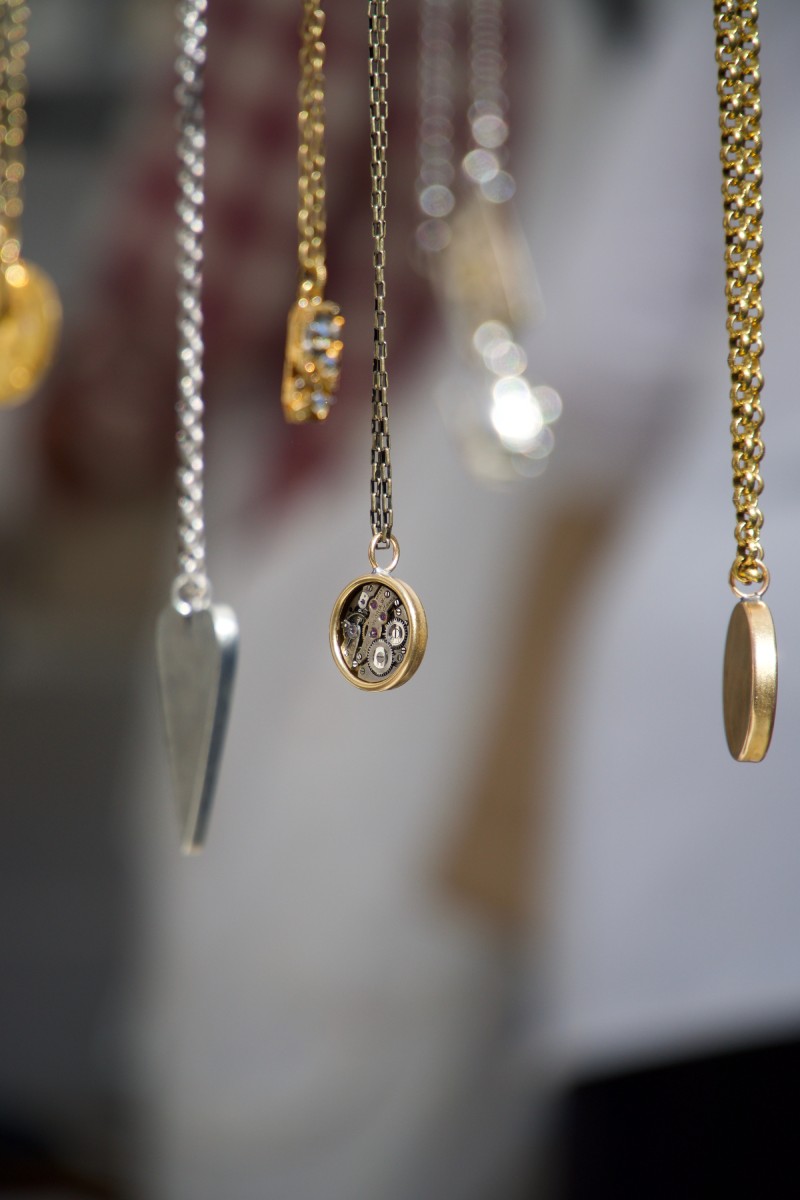
Recap of the importance of choosing ethically sourced jewelry
Ethically sourced jewelry goes beyond just a trend or buzzword. It’s a testament to conscious choices that prioritize human rights, environmental sustainability, and fair economic practices. By choosing ethically sourced jewelry:
-
We support miners, artisans, and workers by ensuring they receive fair wages and work in safe conditions.
-
We reduce the environmental toll by promoting sustainable mining and production practices.
-
We challenge the norm, pushing the jewelry industry towards greater transparency and accountability.
Encouragement for readers to apply the tips provided
To all readers, the choices you make matter. Every piece of jewelry you purchase is a vote cast in favor of the kind of world you wish to support. Applying the insights from this guide:
-
Actively seek out certifications, ask the right questions, and stay wary of red flags.
-
Champion brands that prioritize ethical sourcing, and use your purchasing power to make a statement.
-
Share your knowledge, engage in conversations, and let your jewelry be not just an adornment, but also a conversation starter about ethical practices.
Sharing is Caring
Remember, the ripple effect is real. By sharing your knowledge and experiences with friends and family, you magnify the impact and encourage a collective move towards ethically sourced jewelry.
Final thoughts on the role of ethical sourcing in shaping a more sustainable world
Ethical sourcing in the jewelry industry is more than just a niche concern—it’s a microcosm of the broader challenges and possibilities of our times. As the world grapples with pressing issues of climate change, social inequalities, and economic disparities, the choices we make in our daily lives become even more consequential.
Choosing ethically sourced jewelry, in essence, embodies a broader commitment to sustainability. It’s about recognizing the interconnections between our actions and their ripple effects on communities, ecosystems, and the very fabric of our society.
A Brighter Tomorrow
By championing ethical sourcing, we not only advocate for a more transparent and accountable jewelry industry but also cast a vision for a world where businesses operate with integrity, environmental stewardship, and a genuine commitment to social good.
In closing, while the road to fully ethical sourcing might be long, the journey is invaluable. With every ethically sourced piece we choose, we get one step closer to a world where beauty, in all its forms, is truly untarnished. Here’s to making choices that resonate, inspire, and shine brightly for generations to come.

